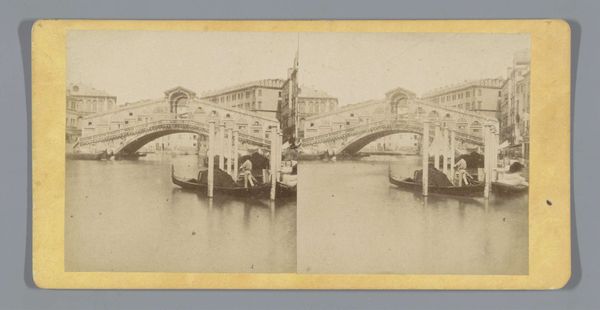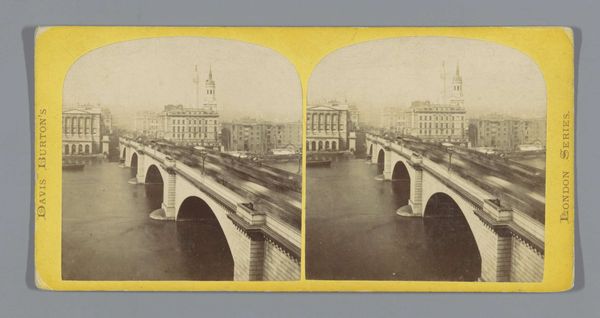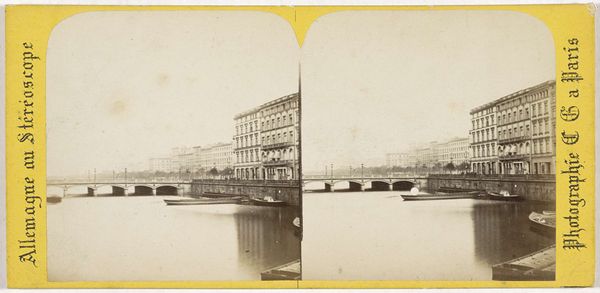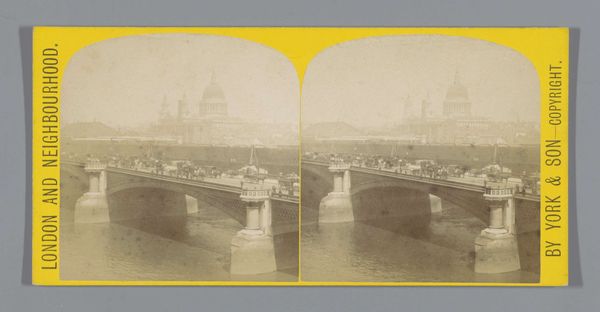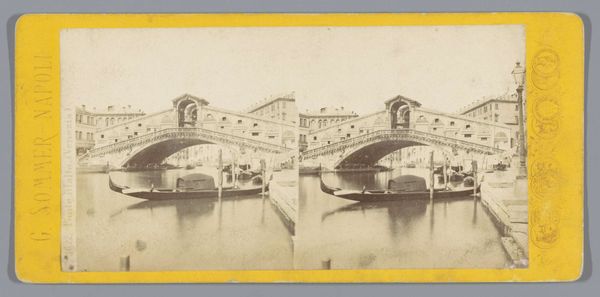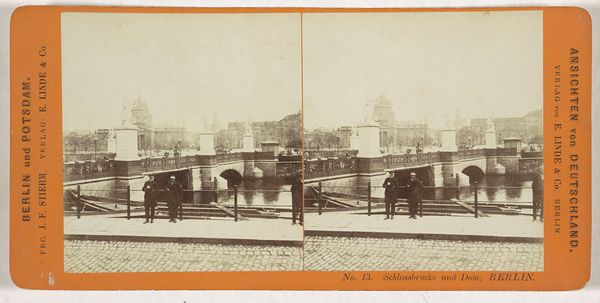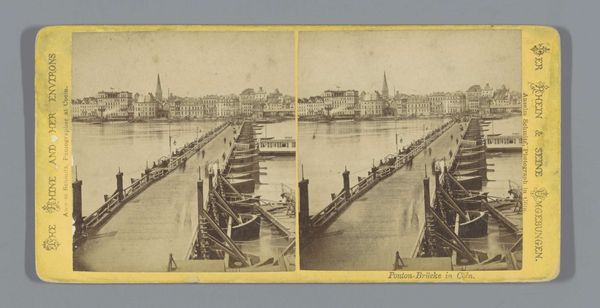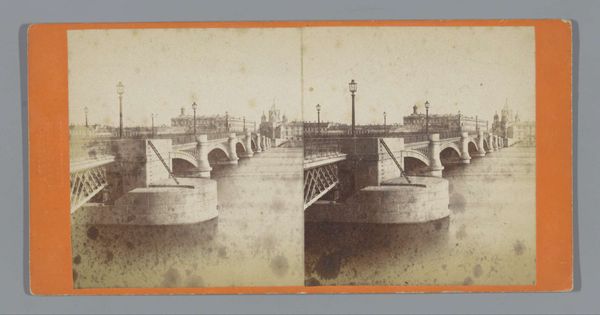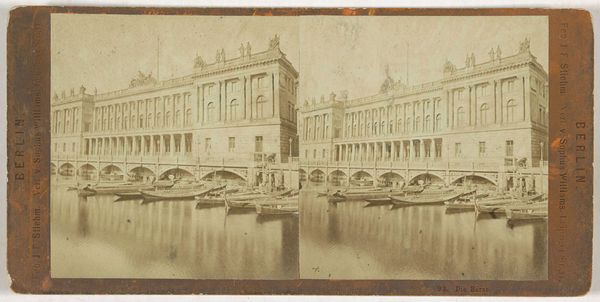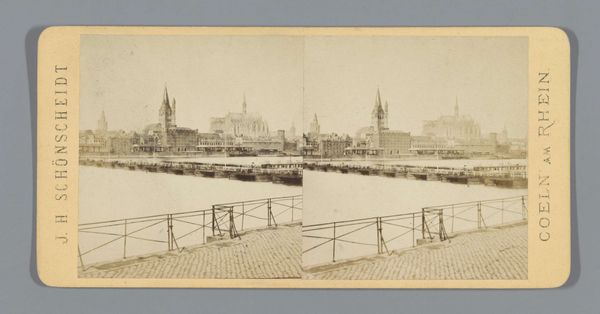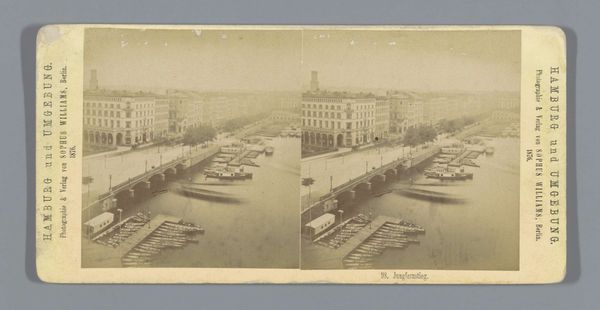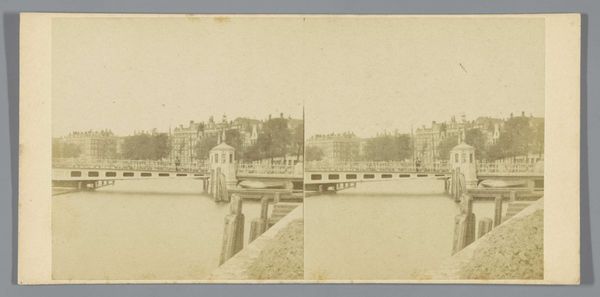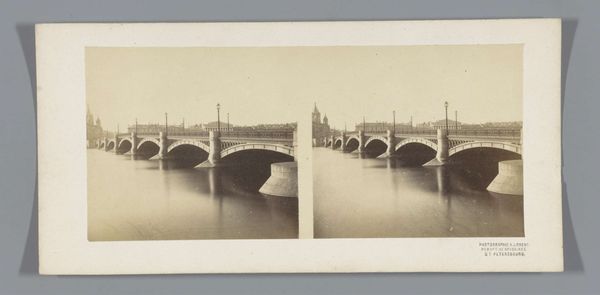
photography
#
16_19th-century
#
photography
#
cityscape
#
building
Dimensions: height 85 mm, width 170 mm
Copyright: Rijks Museum: Open Domain
Editor: So, here we have a stereoscopic photograph from somewhere between 1860 and 1880, titled "Gezicht op het Hôtel-Dieu te Lyon," which translates to "View of the Hôtel-Dieu in Lyon." It appears to be by Jules Hippolyte Quéval. What strikes me is the stillness of the water, it reflects the architecture almost perfectly, creating this mirrored doubling. What do you see when you look at it? Curator: The mirroring you mentioned is significant. Water, throughout history, often symbolizes the subconscious, the hidden aspects of ourselves and our world. To see the architecture reflected so clearly suggests an intention to explore the deeper meaning inherent in these structures. Editor: Meaning like what? The Hôtel-Dieu was a hospital, right? Does that have anything to do with it? Curator: Absolutely. Hospitals, historically and symbolically, are liminal spaces. They represent transitions between life and death, health and sickness. The dome structure is visually quite prominent, dominating the architecture, calling to mind a kind of aspirational symbolism related to both spiritual and scientific advancements. The bridge too. Bridges serve as connectors and suggest that people would move more freely and recover their health to move beyond. Quéval offers us the hope, quite literally, that the ill would get better. Does this imagery call to mind a time or a style? Editor: It does. There's a feeling of classical antiquity about it. The dome and orderly facade sort of recall ancient Roman architecture. Curator: Precisely. This visual echo connects the present with the past, suggesting continuity, that humanity's endeavors—in healing, in building, in connecting—persist through time. Think about what survives. Editor: So it's about the enduring nature of these cultural institutions? Curator: In part, yes. And also about how visual symbols work across time to communicate deeper values and beliefs. They reflect back at us the world we all co-create. It suggests both a looking back and a look forward. Editor: I never considered photography could be so laden with symbols. Thank you.
Comments
No comments
Be the first to comment and join the conversation on the ultimate creative platform.
